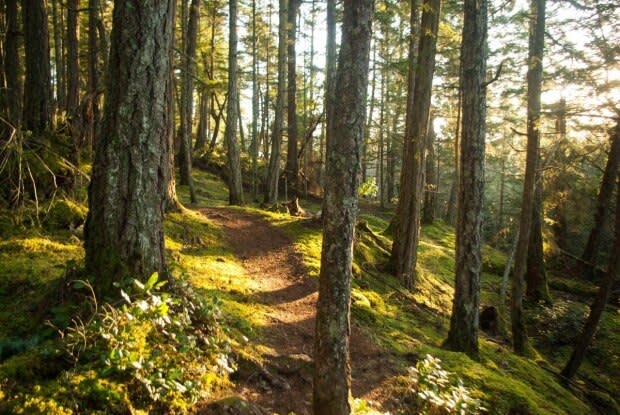Forest mapping project aims to protect Gulf Islands' endangered ecosystems
The federation of local governments that serves British Columbia's Gulf Islands wants to map forests within its boundaries as part of its efforts to conserve sensitive ecosystems and mitigate climate change.
Islands Trust recently issued a request for proposals to map connected forests of the 13 major islands and more than 450 smaller ones between the Lower Mainland and southern Vancouver Island.
Kathryn Martell, an ecosystem protection specialist with Islands Trust, says the federation is working to protect the sensitive Coastal Douglas-fir zone — one of the most threatened in B.C., which includes the endangered Garry Oak ecosystem — as part of its conservation plan.
"We know that one of our best ways of mitigating the effects of climate change is to protect intact forest ecosystems," Martell said.
"With more accurate mapping and data, that enables the Islands Trust to better protect sensitive areas and also to better understand what areas are more suitable for development."
Better baseline data
The project is led in collaboration with the Islands Trust Conservancy, which purchases land for protection, and the Coastal Douglas Fir Conservation.
Sarah Otto, a zoology professor at the University of British Columbia and chair of the Nature Trust of B.C., says the mapping project will give governments and organizations a better sense of which properties should be protected.
"British Columbia is the most biodiverse province or territory in Canada and yet we actually don't have a really great baseline data on what species are where and what needs the most protection," Otto said.

Mapping contiguous forests will also help prioritize which properties to buy, she says, or which homeowners to educate about the value of the forest on their land.
"Canada needs to move towards a system where people are excited if they have endangered species on their property because that means maybe they can get access to different funds or tax incentives to protect that piece of land," she said.
Hundreds of species at risk
Peter Arcese, a forestry professor at UBC, says about 86 per cent of the land on the Gulf Islands is owned privately. It's also some of the most expensive land in the province.
The Gulf Islands have been repeatedly identified for their extremely valuable forests with trees hundreds of years old, Arcese says, yet the data that exists is decades out of date and was never collected well in the first place.
The risk of not properly identifying forests in the area, and thus the animals and other plants that go along with them, is that the province may not be able to reach its national and international targets on biodiversity.

"We will continue to see the endangerment and extinction of potentially hundreds of species in the Gulf islands which have nowhere to go unless we maintain and restore these habitats for them," he said.
Arcese says most modern mapping is done by satellite, but occasionally researchers need to put boots to the ground to confirm information like tree height and separation.
The Islands Trust says it expects the mapping to take about two months.


